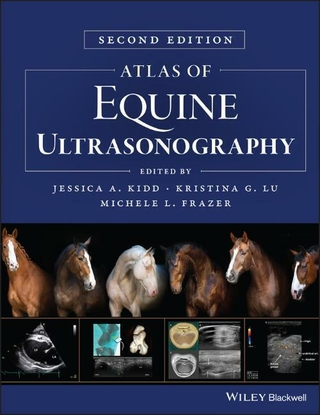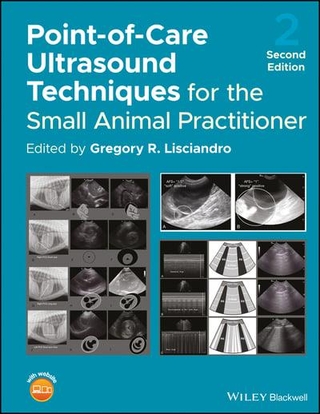Entwicklung und Evaluierung neuer niedrig-molekularer Sonden für die Charakterisierung von Gefäßerkrankungen mittels der Magnetresonanztomographie (MRT)
Seiten
2021
|
1. Aufl.
Mensch & Buch (Verlag)
978-3-96729-114-8 (ISBN)
Mensch & Buch (Verlag)
978-3-96729-114-8 (ISBN)
- Keine Verlagsinformationen verfügbar
- Artikel merken
Atherosklerose ist von fundamentaler Bedeutung für zahlreiche kardiovaskulärer Folgeerkrankungen. Klinisch äußert sie sich meist erst nach Jahren oder Jahrzehnten durch Symptome ihrer Folgeerkrankungen. Die zentralen pathophysiologischen Faktoren dieser Erkrankung sind Endothelzelldysfunktionen, Ablagerungen von Blutfetten in den Gefäßwänden und chronische Entzündungsreaktionen. Kennzeichnend für Atherosklerose ist also die Ansammlung von proinflammatorischen Zellen und extrazellulären Matrixproteinen, wie Elastin, in der Gefäßintima. Ein Risiko für Atherosklerose ist die Plaqueruptur mit der subsequenten Bildung von Thromben, welche zu Herzinfarkten oder Schlaganfällen führen können. Präventionsansätze können die Mortalität dieser Krankheit drastisch senken. Die molekulare Bildgebung ermöglicht die nicht-invasive in vivo Visualisierung und Quantifizierung biologischer Prozesse auf molekularer und zellulärer Ebene. Diese Dissertation hat sich mit dem Potenzial der in vivo Magnetresonanztomographie für die molekulare Bildgebung von Atherosklerose befasst und neue Möglichkeiten in der Detektion dieser Erkrankung aufgezeigt.
Zum einen wurde im ersten Teil dieser Dissertation gezeigt, dass die elastinspezifische Sonde ähnliche Eigenschaften für die Durchführung von MR-Angiographien hat, wie klinisch verwendete Kontrastmittel. Dies ist von hoher Relevanz für die potentielle klinische Translation einer solchen Sonde.
Zum anderen konnte im zweiten Teil dieser Dissertation gezeigt werden, dass auf Basis einer simultanen molekularen MRT mit zwei Sonden die Charakterisierung der Plaquelast und der entzündlichen Aktivität von progressiver Atherosklerose im Mausmodell möglich ist. Der in vivo Nachweis und die Quantifizierung dieser mit Plaque-Instabilität verbundenen Biomarker in einem einzigen Scan können den Nachweis von instabilen Plaques ermöglichen und dadurch die Risikostratifizierung und Behandlungsführung von Patienten verbessern. Die duale Anwendung der elastin- und eisenoxidspezifischen Sonden bildet somit ein neuartiges Bildgebungsinstrument zur in vivo Charakterisierung der Plaqueruptur bei Atherosklerose. Development and Evaluation of new low-molecular probes for the characterization of vascular diseases by magnetic resonance imaging (MRI)
Atherosclerosis is of fundamental importance for numerous cardiovascular sequelae. Clinically, it usually manifests itself only after years or decades by symptoms of their sequelae. The central pathophysiological factors of this disease are endothelial cell dysfunction, deposits of blood lipids in the vessel walls and chronic inflammatory reactions. Characteristic of atherosclerosis is therefore the accumulation of proinflammatory cells and extracellular matrix proteins, such as elastin, in the vascular intima. A risk of atherosclerosis is plaque rupture with the subsequent formation of thrombi, which can lead to heart attacks or strokes. Prevention approaches can drastically reduce the mortality of this disease. Molecular imaging enables the non-invasive in vivo visualization and quantification of biological processes at the molecular and cellular level. This dissertation deals with the potential of in vivo magnetic resonance tomography for the molecular imaging of atherosclerosis and demonstrates new possibilities in the detection of this disease.
On the one hand, the first part of this thesis demonstrated that the elastin-specific probe has similar properties for performing MR angiography as clinically used contrast agents. This is of high relevance for the potential clinical translation of such a probe.
On the other hand, in the second part of this thesis it could be shown that a simultaneous molecular MRI with two probes enables the characterization of the plaque burden and the inflammatory activity of progressive atherosclerosis in a mouse model. The in vivo detection and quantification of these plaque instability-associated biomarkers in a single scan can enable detection of unstable plaques, thereby improving patient risk stratification and treatment guidance. The dual application of the elastin and iron oxide specific probes thus forms a novel imaging instrument for the in vivo characterization of plaque rupture in atherosclerosis.
Zum einen wurde im ersten Teil dieser Dissertation gezeigt, dass die elastinspezifische Sonde ähnliche Eigenschaften für die Durchführung von MR-Angiographien hat, wie klinisch verwendete Kontrastmittel. Dies ist von hoher Relevanz für die potentielle klinische Translation einer solchen Sonde.
Zum anderen konnte im zweiten Teil dieser Dissertation gezeigt werden, dass auf Basis einer simultanen molekularen MRT mit zwei Sonden die Charakterisierung der Plaquelast und der entzündlichen Aktivität von progressiver Atherosklerose im Mausmodell möglich ist. Der in vivo Nachweis und die Quantifizierung dieser mit Plaque-Instabilität verbundenen Biomarker in einem einzigen Scan können den Nachweis von instabilen Plaques ermöglichen und dadurch die Risikostratifizierung und Behandlungsführung von Patienten verbessern. Die duale Anwendung der elastin- und eisenoxidspezifischen Sonden bildet somit ein neuartiges Bildgebungsinstrument zur in vivo Charakterisierung der Plaqueruptur bei Atherosklerose. Development and Evaluation of new low-molecular probes for the characterization of vascular diseases by magnetic resonance imaging (MRI)
Atherosclerosis is of fundamental importance for numerous cardiovascular sequelae. Clinically, it usually manifests itself only after years or decades by symptoms of their sequelae. The central pathophysiological factors of this disease are endothelial cell dysfunction, deposits of blood lipids in the vessel walls and chronic inflammatory reactions. Characteristic of atherosclerosis is therefore the accumulation of proinflammatory cells and extracellular matrix proteins, such as elastin, in the vascular intima. A risk of atherosclerosis is plaque rupture with the subsequent formation of thrombi, which can lead to heart attacks or strokes. Prevention approaches can drastically reduce the mortality of this disease. Molecular imaging enables the non-invasive in vivo visualization and quantification of biological processes at the molecular and cellular level. This dissertation deals with the potential of in vivo magnetic resonance tomography for the molecular imaging of atherosclerosis and demonstrates new possibilities in the detection of this disease.
On the one hand, the first part of this thesis demonstrated that the elastin-specific probe has similar properties for performing MR angiography as clinically used contrast agents. This is of high relevance for the potential clinical translation of such a probe.
On the other hand, in the second part of this thesis it could be shown that a simultaneous molecular MRI with two probes enables the characterization of the plaque burden and the inflammatory activity of progressive atherosclerosis in a mouse model. The in vivo detection and quantification of these plaque instability-associated biomarkers in a single scan can enable detection of unstable plaques, thereby improving patient risk stratification and treatment guidance. The dual application of the elastin and iron oxide specific probes thus forms a novel imaging instrument for the in vivo characterization of plaque rupture in atherosclerosis.
| Erscheinungsdatum | 18.06.2021 |
|---|---|
| Verlagsort | Berlin |
| Sprache | deutsch |
| Maße | 148 x 210 mm |
| Themenwelt | Veterinärmedizin ► Allgemein |
| Veterinärmedizin ► Vorklinik | |
| Veterinärmedizin ► Klinische Fächer ► Bildgebende Verfahren | |
| Schlagworte | Animal Models • Artherosclerosis • Artherosklerose • contrast agents • Entzündung • Histologie • Histology • Immunfluoreszenz • immunofluorescence • inflammation • Kontrastmittel • Magnetic Resonance Imaging • Magnetresonanztomographie • Mäuse • mice • Radiographie • radiography • Tiermodell |
| ISBN-10 | 3-96729-114-6 / 3967291146 |
| ISBN-13 | 978-3-96729-114-8 / 9783967291148 |
| Zustand | Neuware |
| Haben Sie eine Frage zum Produkt? |
Mehr entdecken
aus dem Bereich
aus dem Bereich
Buch | Hardcover (2021)
Wiley-Blackwell (Verlag)
169,00 €
Röntgenbilder sicher befunden
Buch | Hardcover (2018)
Thieme (Verlag)
74,99 €




